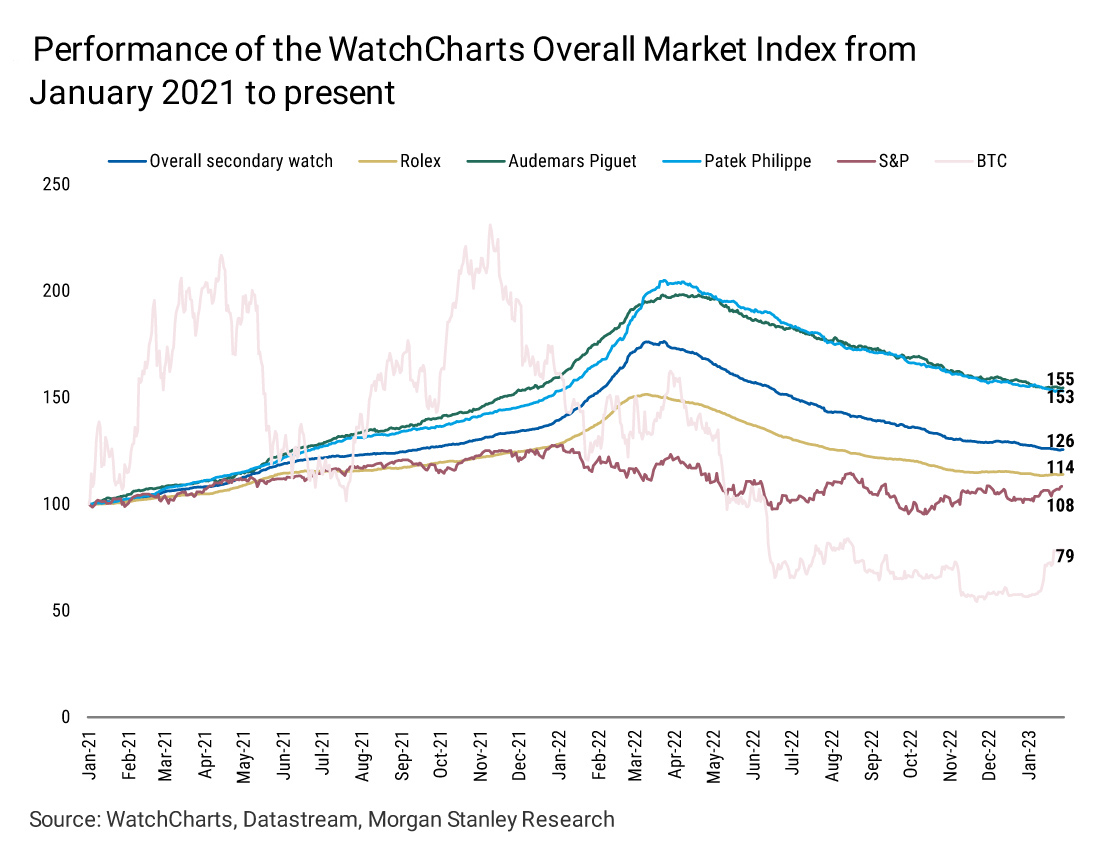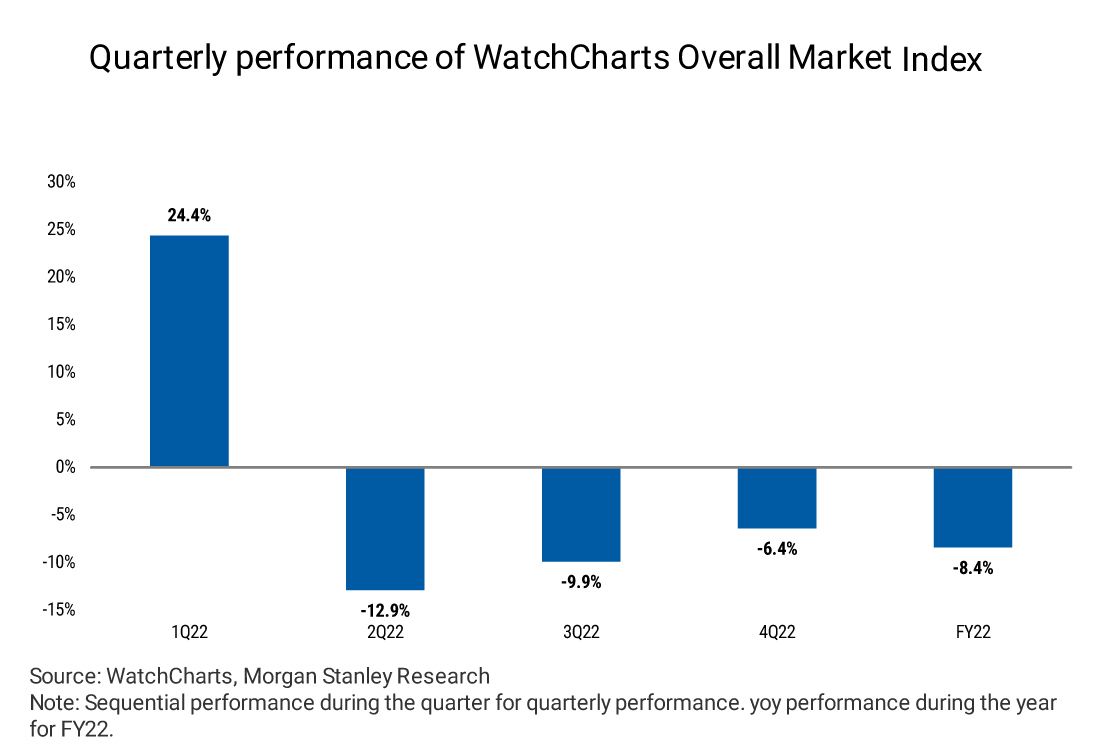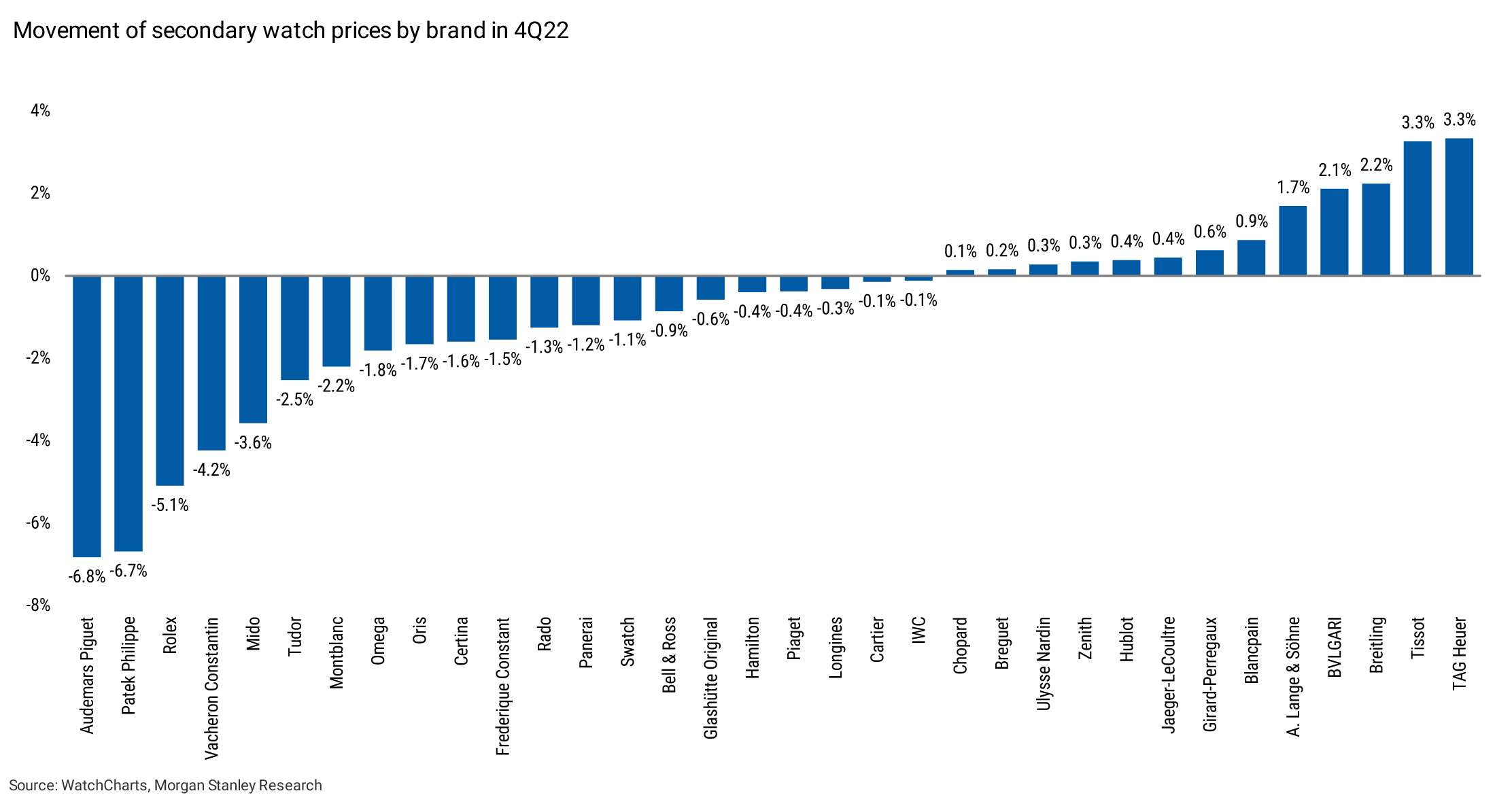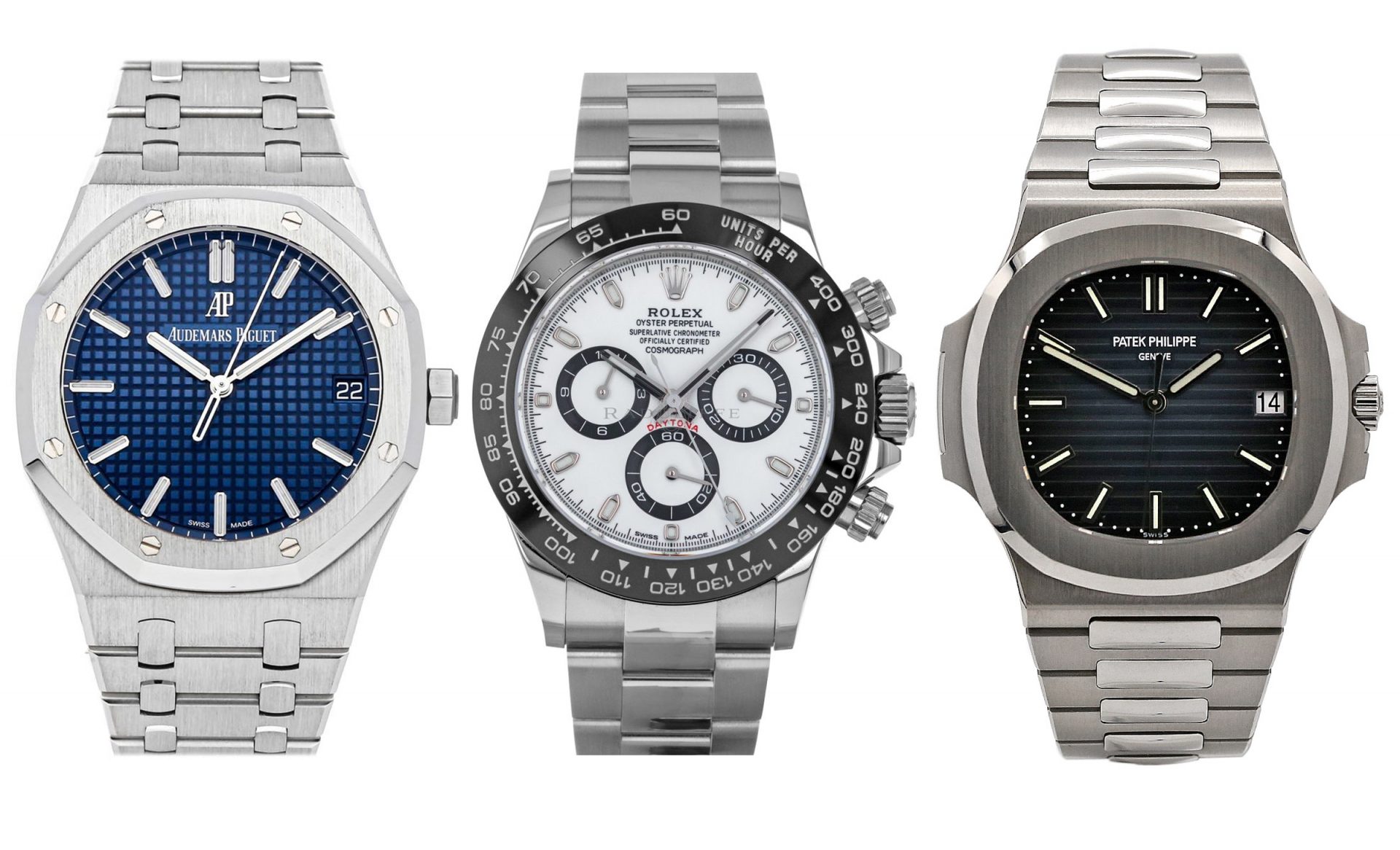The first quarter of hysterical rises in 2022 followed by nine months of price falls for the most traded watches from Rolex, Patek Philippe and Audemars Piguet broadly followed the same trajectory of other over-inflated assets like tech stocks and crypto currencies.
What a new report by investment bank Morgan Stanley suggests, however, is that luxury watches were actually a better bet since the start of 2021 than other alternative investments because they rose in value faster through to the first quarter of last year and declined more slowly once the market turned.
This matters to the equity investors that Morgan Stanley advises, because tracking prices of second hand watches is a good way of monitoring brands’ broader desirability, and thus future pricing power and potential growth trajectory, the banker says in a research note about how the secondary market performed against other asset classes over the past two years.
Notably, you cannot invest in any of the top three most tradeable watch brand because the are all privately owned and run, but the point stands because desirability of watches from the publicly listed groups — LVMH, Swatch Group and Richemont — can be measured against privateer competitors.
A word of caution before we get into the weeds of what the Morgan Stanley report reveals.
The secondary market pricing data is supplied by WatchCharts, which collects and analyses millions of sales and advertised listings from across the web to provide the most accurate price estimates.
By its own admission, this not a perfect methodology because, for example, dealers’ asking prices are often significantly inflated and may not reflect actual transaction values when a sale is made.
This was particularly true as the market turned in March into April last year when the volume of transactions fell off a cliff, but advertised prices were still at peak levels.
Even these peak prices were very likely to be overstated because it was in dealers’ interest to keep the market looking as healthy as possible for as long as possible and they do not necessarily share the final sale price of every transaction on platforms like Chrono24.
By comparison, the S&P 500 and Bitcoin trading is tightly regulated and all price information is perfectly reliable.


Digging into the Morgan Stanley report, which includes WatchCharts data all the way through to the end of January 2023, the headline conclusion is that falling prices for the big three brands — Rolex, Audemars Piguet and Patek Philippe — which account for have continued to fall.
And, because these three brands account for around 70% of the value of all trades on the secondary market, they give the appearance that there is weakness across the board, which is not the case.
The hottest steel sports watches from the big three are still trading at over recommended retail prices, despite falling since the end of Q1 2022.
Outside this cohort of ‘unicorn’ watches, the market has been far less volatile. The vast majority of watches did not see prices rocket into the early months of last year, and have not plummeted since. They rose and fall a little but, because they never traded at over retail, there was no pile-in by the flippers.
As well as the roller coaster for demand, Morgan Stanley helpfully records a concurrent rise in supply for waiting list watches. In fact, the report says that the price correction was more to do with supply than demand, suggesting: “In our 3Q22 note, we reported a significant incrfease of available inventory on the secondary market since February 22, as a result of watch dealers and individual watch investors oofloading their stocks. The supply influx continued in 4G22. As per WatchCharts data, supply increased by 19% for Rolex, 8% for Patek Philippe and 5% for Audemars Piguet”.
This was a slow down from earlier quarters. For the whole of 2022, supply of Rolex watches on the secondary market more than doubled for Rolex (+104%) and Patek Philippe (+110%). AP supply was up 78%.
Vacheron Constantin, which had joined the party for dealers profiting from trading its sporty Overseas watches, saw a reverse in Q4 as people looked to cash out and supply on the secondary market ballooned (up 200% in 2022). As a result, the price of the Overseas dropped by 4.2% in the final three months of last year.
Like stock market traders, there appeared to be an uptick in demand for watches that looked under-priced towards the end of 2022.
So, while prices for Rolex, AP, Patek Philippe, Audemars Piguet and even Tudor fell on the secondary market, there were notable rises for TAG Heuer, Tissot, Breitling, Bulgari, A. Lange & Sohne, Blancpain, Girard-Perregaux, Jaeger-LeCoultre, Hublot and Zenith.

Watches from all of these brands, and more besides, contribute only 30% to the value of trades on the secondary market, so prices can fluctuate more easily, leading some analysts to speculate on whether the brands themselves have been buying enough watches to shift secondary market prices in a positive direction.
There is certainly a concentration among the group brands of LVMH, Richemont and Swatch Group, which comfortably have the financial muscle to move the needle in a favourable direction by buying their own watches.
As the price correction has continued into January of this year, more and more of the hottest waiting lists watches are trading at below recommended retail prices with authorised dealers.
Vacheron Constantin’s Overseas in steel is now trading at below retail, as are less in-demand Rolex models including the Sea-Dweller and Yacht-Master.
Morgan Stanley and WatchCharts do not make this observation, but a recent conversation with one of the world’s largest pre-owned specialists revealed that, when it comes to buying watches, they were only paying over retail for three watches: Audemars Piguet’s Royal Oak, Rolex’s Daytona and Patek Philippe’s Nautilus.
There is a massive difference (between 25% and 50%) between what inventory-holding businesses like WatchBox, Bob’s Watches, Watchfinder and Crown & Caliber will buy a watch for, and what they will then advertise it for.
In a falling market, they have to protect margins by anticipating what a watch will be worth in the future, and they are being ultra-cautious with their buying right now.

